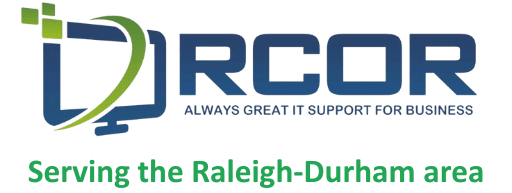With increasing aggression from cyber threats, securing your business’s digital assets isn’t a choice—it’s a necessity. For small business owners in Raleigh–Durham, ransomware Office 365 is among the most disruptive threats, capable of halting operations and putting sensitive data at risk.
In this guide we’ll cover how ransomware works, why Office 365 environments are often targeted, and what practical steps you can take to detect and recover files. With the knowledge of attacks and utilizing the appropriate protections and preventative measures, you will be able to protect sensitive attributes, uphold business continuity, foiling adversaries and building customer confidence.
What is Ransomware and Why Office 365 is at Risk?
Ransomware is malicious software that encrypts files and demands a ransom be paid to regain access. For an organization reliant upon Microsoft 365 (Exchange, OneDrive, SharePoint, Teams), a single infection can bring business to a standstill almost overnight.
Why Office 365 is a Common Target
Mass adoption – Millions of businesses depend on Office 365 as a tool to grow their business, boosting mainstream appeal for attackers.
Attractive cloud environment – If the threat actor is able to access Office 365 data, no longer is there one “entry point” to gain access. They can access the data from multiple endpoints.
Email delivery – Phishing campaigns remain the most common delivery method to infect Office 365 actions.
End user bias/human error – The human element is always the best scope of control for a hacker. People may accidentally click on links they do not recognize in emails, as an example, and grant access that way.
Without a proper level of security, ransomware will spread to other systems and could encrypt all of your business-critical data, leaving you with whether pay a ransom, or lose access to all business-critical data.
The Growing Threat of Ransomware in Microsoft 365
With tools that leverage AI-driven phishing, more and more cybercriminals are more sophisticated, more established, and exploiting unpatched vulnerabilities. For small businesses in Raleigh and Durham, risks include:
- Data loss – Files can be permanently corrupted or deleted.
- Downtime – Access to your data stops your operations during recovery.
- Financial costs – Lost revenues, ransom payments, or compliance costs.
- Reputation damage – Breach of customer trust.
Maintaining a proactive stance takes a multi-faceted protection plan that consists of prevention, detection and recovery.
Essential Ransomware Protection Strategies
1. Enable Cloud Backups
Backups are your best protection. Services like OneDrive and Azure Backup allow you to restore clean files fairly quickly after an attack.
Schedule backups to run automatically once a day.
Store your backups in isolated environments (with no connections to the primary network).
Verify your restores regularly to assure availability.
2. Keep Office 365 Updated
Unpatched systems are a key target. Microsoft has built in processes of patching vulnerabilities:
- Enable automatic updates.
- Conduct non-technical employee training along side patching to limit human behavior assessed as negligent.
- Pair patching with endpoint protection tools to build resilience.
3. Strengthen Access Controls
Limit the entry avenues for the hacker:
- Multi-factor authentication (MFA) on all accounts.
- Strong password policies with user education.
- Behavioral analysis of login attempts.
4. Invest in Ransomware Detection Tools
Along with prevention actions, there are multiple detection or monitoring tools. Some tools are as simple as Microsoft Defender or Sentinel Azure:
- Monitor for abnormal activity (for example an unusual amount of file encryption, or changes in permission).
- Early detection of phishing attempts.
- Instantaneous alerts to your IT team when normal behavior appears to have ceased.
Detecting Ransomware in Office 365
Warning Signs of Infection
- Indications of Infection
- File renaming from their names to some other strange extensions.
- Unexplained changes in access permissions.
- Error messages when trying to open files, or new access denials on files previously opened.
- Unusual login attempts from unusual locations.
Detection Techniques
Behavioral analysis – Identify abnormal usage patterns.
Phishing filters – Block malicious emails before they reach employees.
Audit logs – Regularly review account activity for anomalies.
Early detection allows you to contain infections before they spread.
Data Recovery After a Ransomware Attack
Steps to Take Post-Incident
What to do after your occurrence:
- Take systems offline – make sure you disconnect everything that is infected.
- Restore from clean backups – OneDrive or Azure from prior to the event.
- Clean recovery – sometimes scanned images of systems can be recovered by recovery software, but hijacked or locked files and systems cannot be restored.
- Rebuild – using clean system images, and remediating the vulnerabilities from your clean structure.
Building a Recovery Plan
Prioritize critical systems and data in your backups.
Train employees to follow recovery procedures.
Run mock recovery drills to test readiness.
Ensure your recovery architecture can scale with your business.
Conclusion
Ransomware is one of the most serious risks affecting all types of businesses that exist today – with the proper blend of protection, detection, and recovery, Office 365 can safely and reliably function in an unaffected workstation environment.
To business owners in Raleigh–Durham, protecting your data is more than safeguarding downtime – it is how to you protect this part of intangible support and therefore their reputations and trust that they have built up between earning and honouring that intangible support; – what is more valuable?
We can support you – the RCOR team are specialists in the area of ransomware protection and the use of Office 365 as your security structure.
Contact us today to create your custom defence plan for your business.

